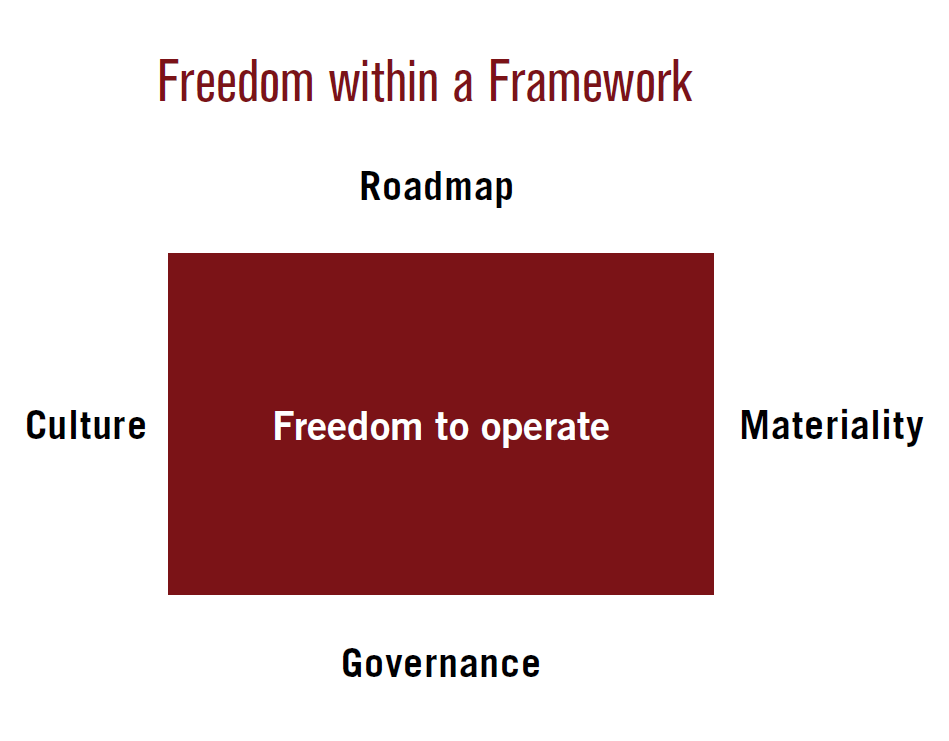What is the best way to balance autonomy with protecting the company from poor decisions that may arise from that autonomy?
One approach that works is called “freedom within a framework.” The idea is that you empower your department to operate autonomously — but within well-defined boundaries, beyond which there is no authority to “go it alone.” The boundaries are: governance, culture, roadmap, and materiality.

Governance: Everyone must be subject to corporate governance, including company and department policies, guidelines, and other norms. No one should be allowed to act outside of these in carrying out his or her work.
Culture: Culture consists of the shared principles and practices that influence how people feel, think, and behave within an organization. If people consistently operate outside of the cultural norms, two very negative things will happen. First, your culture will atrophy and bring a flight of talent and poor performance.
Second, and perhaps more importantly, bad decision-making will emerge. A well-established culture will tell you when the company’s integrity is threatened. You allow violation of cultural norms at your peril.
Two final points should be noted about the culture boundary. First, putting it in place requires that you clearly articulate and reinforce your culture. You must identify cultural norms and publicize them. A good example of this is HubSpot’s “culture code.”
Second, while there may be differences between your legal team’s subculture and the company’s broader culture, the two must be consistent. It is essential that your legal team’s culture be aligned with the broader culture. As Abraham Lincoln famously said, “A house divided against itself cannot stand.”
Strategic framework: A strategic framework, consisting of a vision, mission, and priorities, will allow you to determine where you are heading and how you will get there.
If you allow people to disregard your strategic framework and prioritize work and tasks as they see fit without reference to any bigger picture, people will spend their precious time and energy on matters that may not be core priorities.
In a world of scarce resources, this is not something you can allow. Your efforts to define and implement core priorities will be ineffectual if people can disregard them and make up individual priorities.
Materiality: Finally, you need to instill materiality boundaries for people at different levels to ensure that you strike that right balance between giving people the freedom to take reasonable risks and allowing them so much latitude that their decisions risk blowing up the company.
The parameters you establish may vary by seniority. You might give more senior people the freedom to settle certain types of litigation matters without specific authorization. By contrast, a relatively junior member of the team might only be permitted to independently settle certain matters without senior approval.
To determine your materiality, ensure you know about certain sensitive matters, irrespective of formal parameters. For example, you should know of any decisions that involve sensitive ethical violations, disputes involving product liability or quality, etc.
By putting “freedom within a framework” in place, your team will have the flexibility, freedom, and autonomy to drive decisions, but in a manner that is consistent with your department’s strategic priorities.




